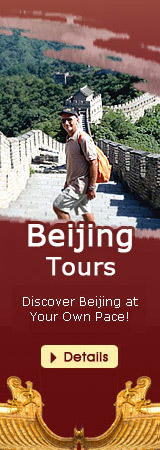The Ancient Observatory was originally built in the Yuan Dynasty (1271 - 1368) by two astronomers, Wang Xun and Guo Shoujing. In around 1442 of the Ming Dynasty (1368 - 1644), Beijing Ancient Observatory was rebuilt in the southwest side of Jianguomen crossroad at Dongcheng District. As a special museum displaying Chinese ancient astronomical equipments and astronomy, it is one of the oldest astronomical observatories in the world. It was officially opened in 1956, and now it has been reformed to Beijing Ancient Astronomical Equipment Exhibition Hall, which belongs to Beijing Astronomy Observatory.
Beijing Ancient Observatory is composed of Star Observatory made of brick in 14 meters (49 feet) high and buildings like Ziwei Palace, Clepsydra House and Shadow Observation Hall under the platform. It has 500 years successive astronomical observation history from the Zhengtong period in the Ming Dynasty to the year of 1929.
During the Ming and Qing (1644 - 1911) Dynasties, it served as the center of astronomical research and much astrological speculation. During the Emperor Zhengtong's Reign of the Ming Dynasty, there were some valuable astronomical instruments including the armillary sphere, the equatorial torquetum and the celestial sphere in the observatory. The Ziwei Palace and the Guiying Hall were also built in that period. In 1644, when the Qing Dynasty was established, the observatory began to adopt the European astronomy to calculate almanac. In Emperor Kangxi and Qianlong periods of the Qing Dynasty, the astronomical observatory added eight large-sized astronomical observatory equipment made of cooper one after another.
During Emperor Kangxi's reign, seven new instruments, namely the equatorial armillary sphere, millary spherehorizon circle, and the range quadrant, the sextant, the celestial globe as well as the altazimuth, were developed. During the ruling of Emperor Qianlong, a new type of celestial sphere named Ji Heng Fu Chen Yi, turned out. All those eight instruments are what we see in the Ancient Observatory today.
They all adopt the European measurement and equipment construction. Those astronomical equipment have large body, beautiful sculpt and excellent engraving. Except for the Chinese tradition characterized aspects like sculpt, flower decoration and craftwork, the other aspects like graduation, cursors and construction also reflect the process and achievement of large-size astronomical equipment after the period of renaissance of the Western Europe. They are not only the practical astronomy observation equipment but also the incomparable historic culture relic treasures. Thus the Ancient Observatory is the historical witness of oriental and western culture exchanges.
![]() Entrance Fee: CNY 10
Entrance Fee: CNY 10
![]() Opening Hours:
Opening Hours:
09:00 - 18:00 (summer); 09:00 - 16:30 (winter)
![]() Transportation:
Transportation:
A. Take Bus No. 1, T2, 10, 20, 29, 37, 39, 52, 120, 122, 403, 420, 728, 802 or 938 and get off at Beijing Railway Station East.
B. Take Subway Line 1 or 2 and get off at Jianguomen Station and get out of the station from Exit C (southwest exit).








